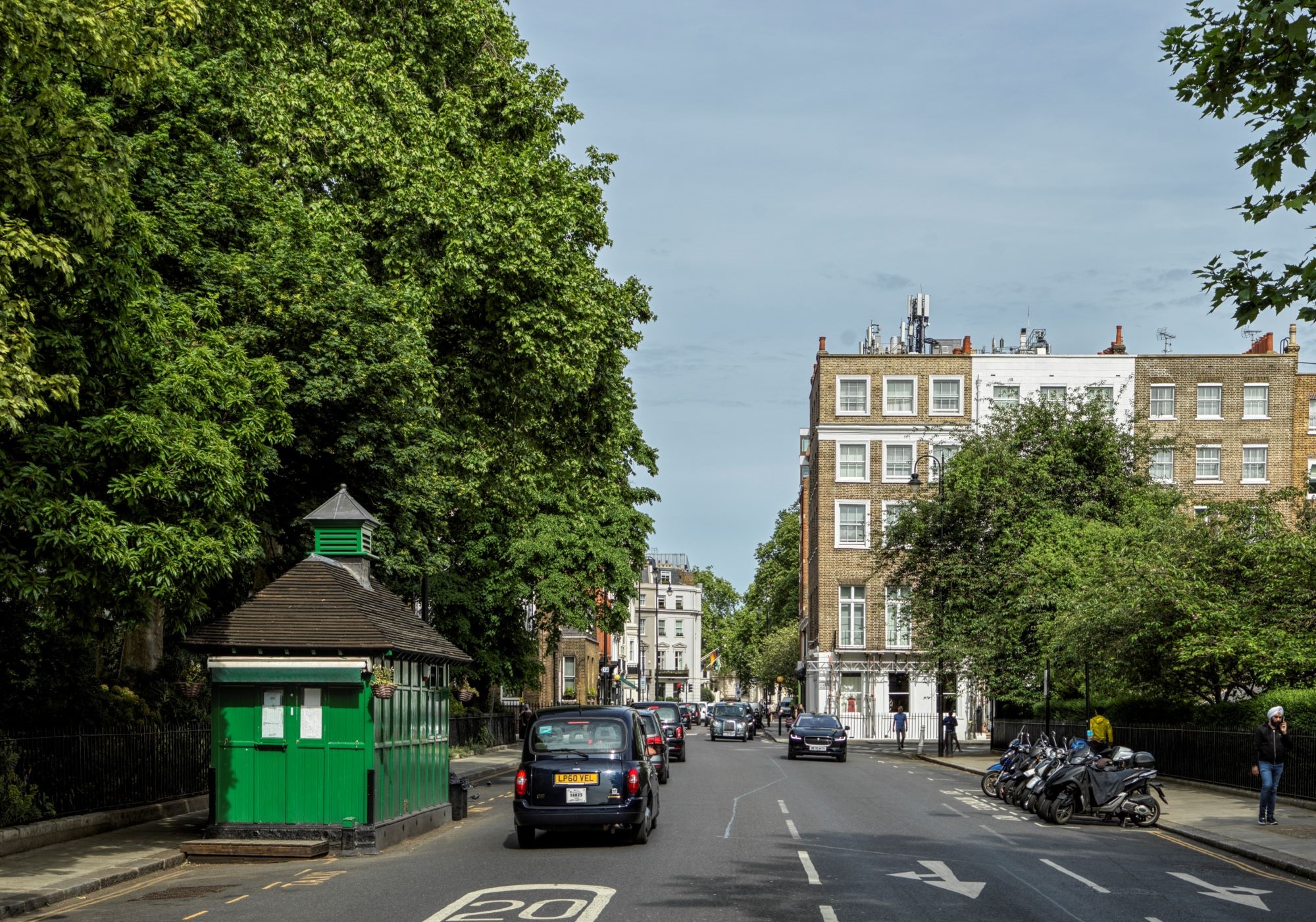Two Cabmen's Shelters Listed on London History Day
To mark London History Day, two iconic green cabmen’s shelters have been listed at Grade II by the Department for Digital, Culture, Media and Sport (DCMS) on the advice of Historic England.
The shelters in Kensington and Chelsea at Pont Street and Chelsea Embankment were designed as rest stops for licensed cab drivers and join ten others in London already on the National Heritage List. The Chelsea Society applied for the two shelters to be considered for listing.
Only 13 shelters survive in the capital today. They are one of the few relics of nineteenth-century London’s horse-drawn hansom cab trade.
A brief history of the cabbie shelter
In Victorian London cabmen were prohibited by law from leaving their cabs unattended in the rank. While on the job there was no protection from the elements, access to hot food or a place to rest. This led many drivers to stop at a pub between fares. However, they would have to pay someone to look after their cab, risk it being stolen, and some drivers were found to ‘drink more than is good for their health or behaviour’.
The idea of providing shelters on the ranks was first conceived by Captain George C Armstrong, editor of The Globe newspaper. When Armstrong was unable to get a cab during a storm because the drivers had all sought refuge in local pubs, he decided to band together a group of wealthy and influential philanthropists to provide a solution. He helped establish The Cabmen’s Shelter Fund (CSF) in London in 1875, providing warm and dry rest stops at ranks across the capital. The charity still operates today.
The first shelter was moveable and was built in February 1875 on Acacia Road in St John’s Wood, outside Armstrong’s home. Designs of cabmen’s shelters varied over time but the most recognisable ‘ornamental’ shelter design we see today was the work of architect Maximillian Clarke. The familiar size, shape and colour helped cabbies spot them easily.
The shelters had a small kitchen run as a café by an attendant and space for around 10 drivers to sit, enjoy a meal and each other’s company. Gambling, drinking and swearing were strictly forbidden.
Most of London cabmen’s shelters have been lost – their roadside position made them prone to damage from traffic and vandalism or impacted by changes to road layout. Of the 61 shelters known to have been built between 1875 and 1950 only 13 now survive.
Pont Street
The shelter at Pont Street was built by the Cabmen’s Shelter Fund in 1892. It replaced an earlier version from 1875, which was one of the earliest cabmen’s shelters constructed in London. It is still open today as a friendly rest stop for taxi drivers.
According to the Pall Mall Gazette, the 1892 shelter was largely funded by contributions from residents of the local neighbourhood. It was reported to be well used, with average attendance of cabbies daily varying from 12 to 180, but often much higher numbers on the busiest days.
The distinctive wooden structure retains its overall character, and while it has been modernised inside, the basic original arrangement of a galley kitchen and serving hatch at one end and a communal section with benches at the other end can still be found.
Inside, the shelter is reserved strictly for black cab licence holders. Non-licence holders and the public can be served from outside the hatch.
Chelsea Embankment
The shelter at Chelsea Embankment, sometimes referred to as ‘The Pier’ due to its proximity to Cadogan Pier, was built by the Cabmen’s Shelter Fund in 1912. It has been moved slightly from its original position on Royal Hospital Road to the east.
The shelter became redundant and fell into a poor state of repair following the introduction of the Red Route along Chelsea Embankment in 1999, which prevented cab drivers from stopping here.
There have been various repairs to the shelter over the years - most recently funded by the Heritage of London Trust in 2022 who hope to soon open the newly restored shelter as a public micro café.





